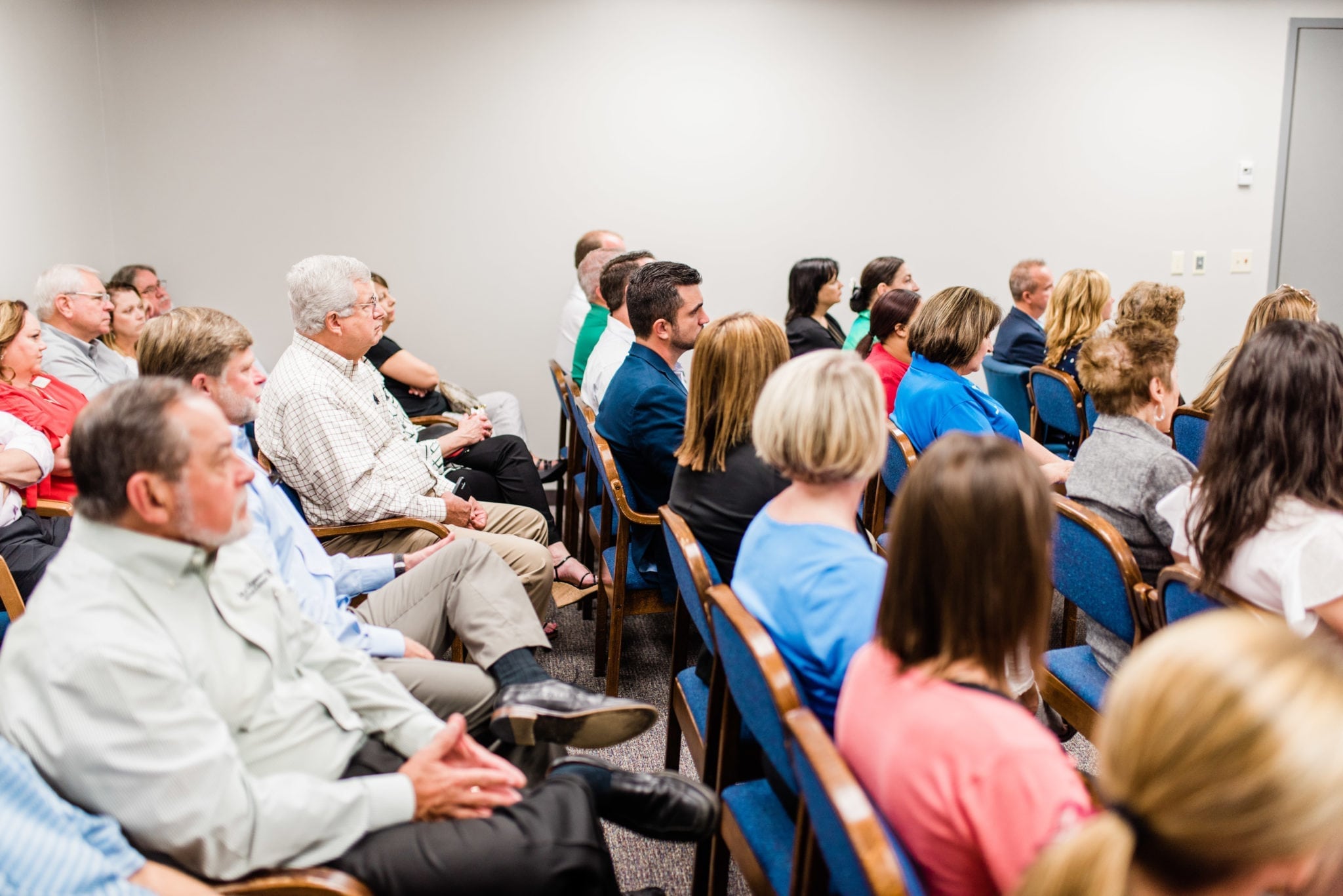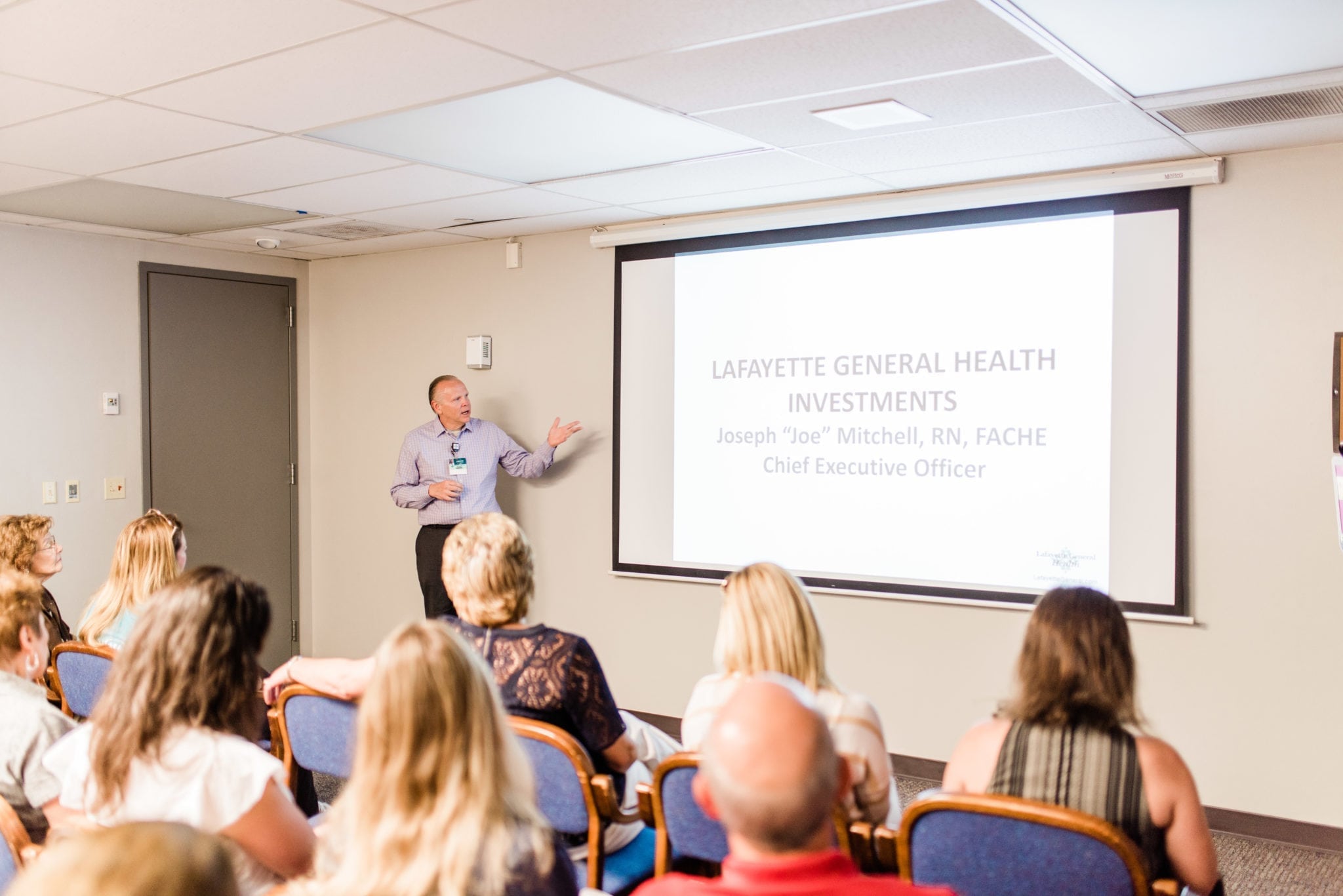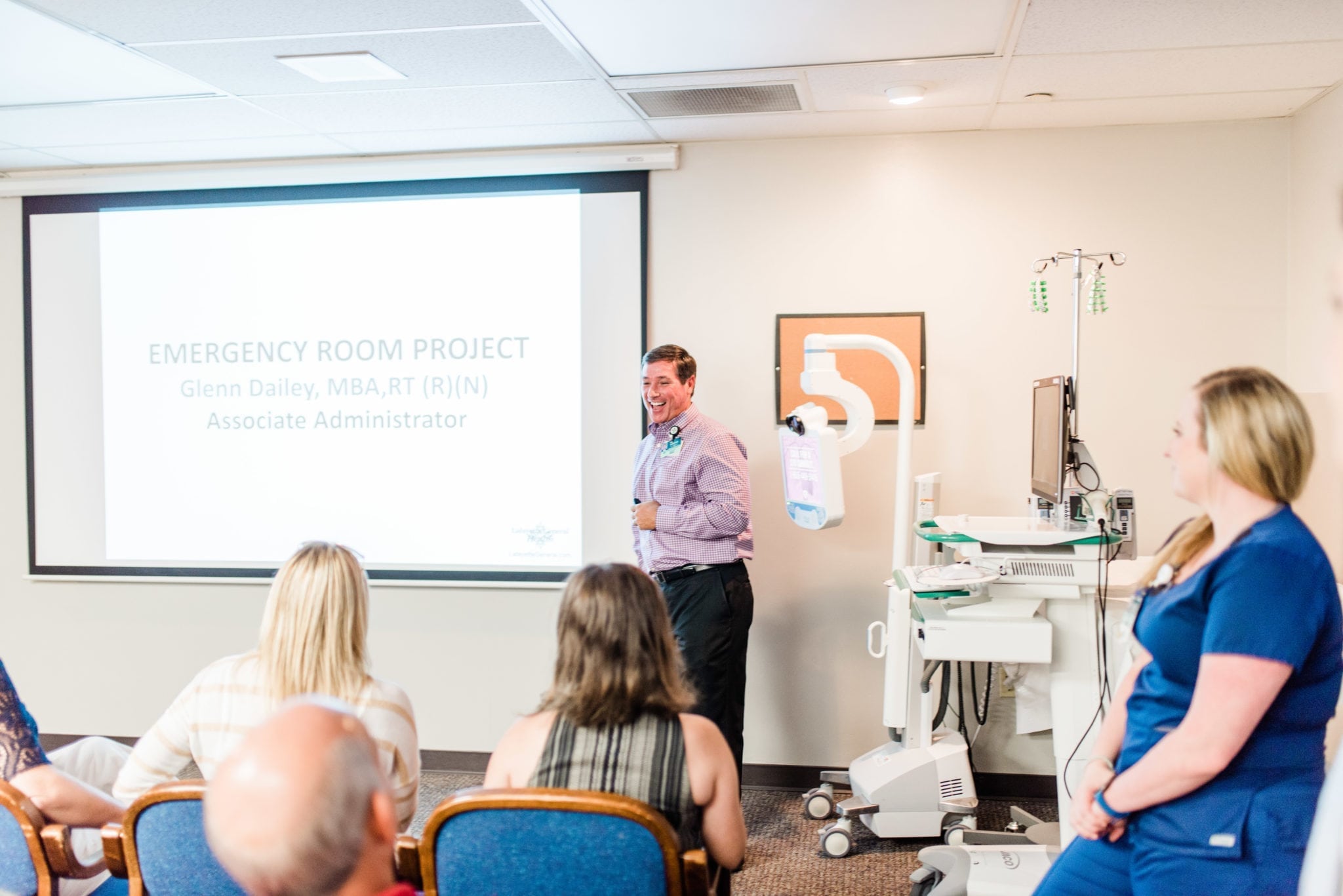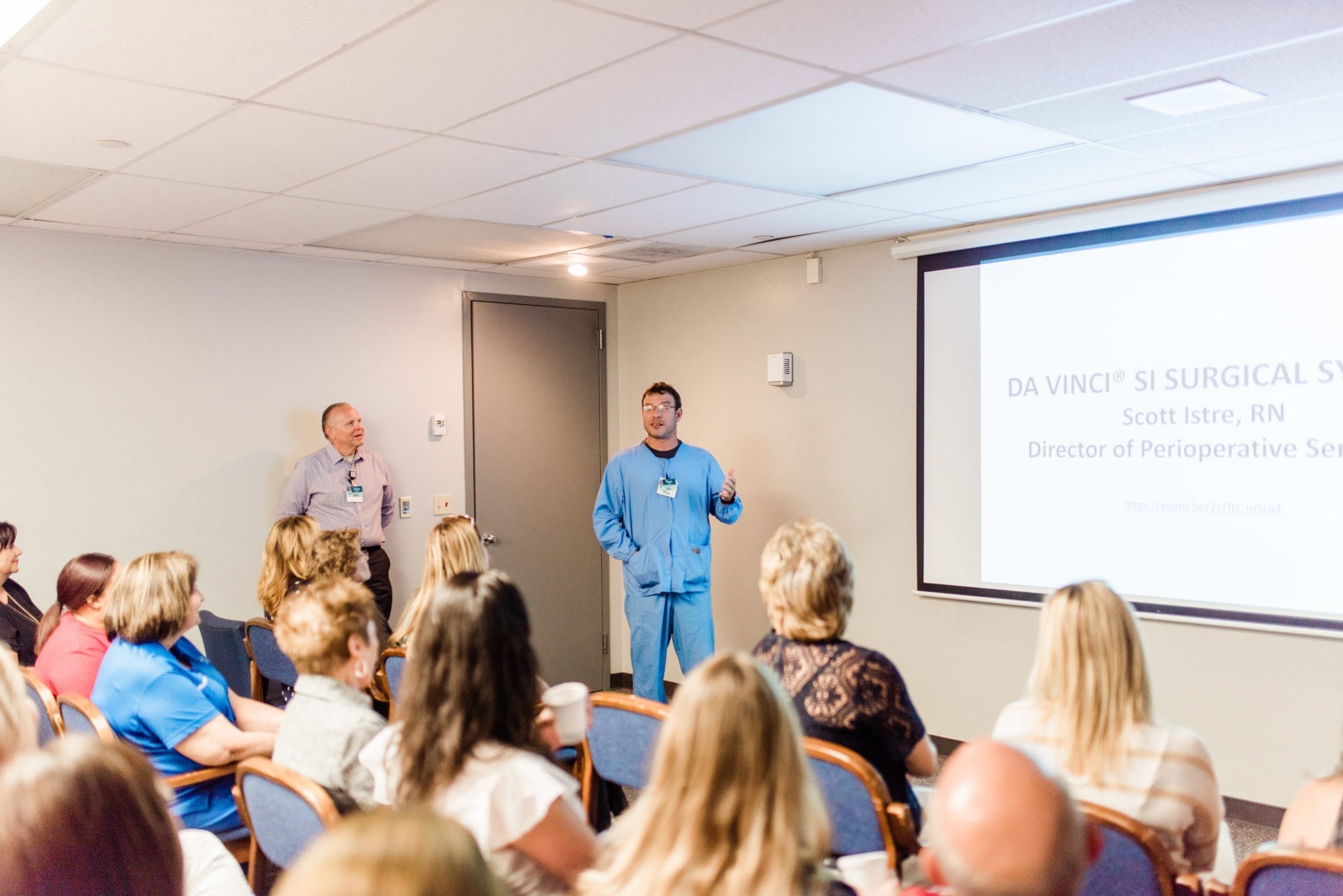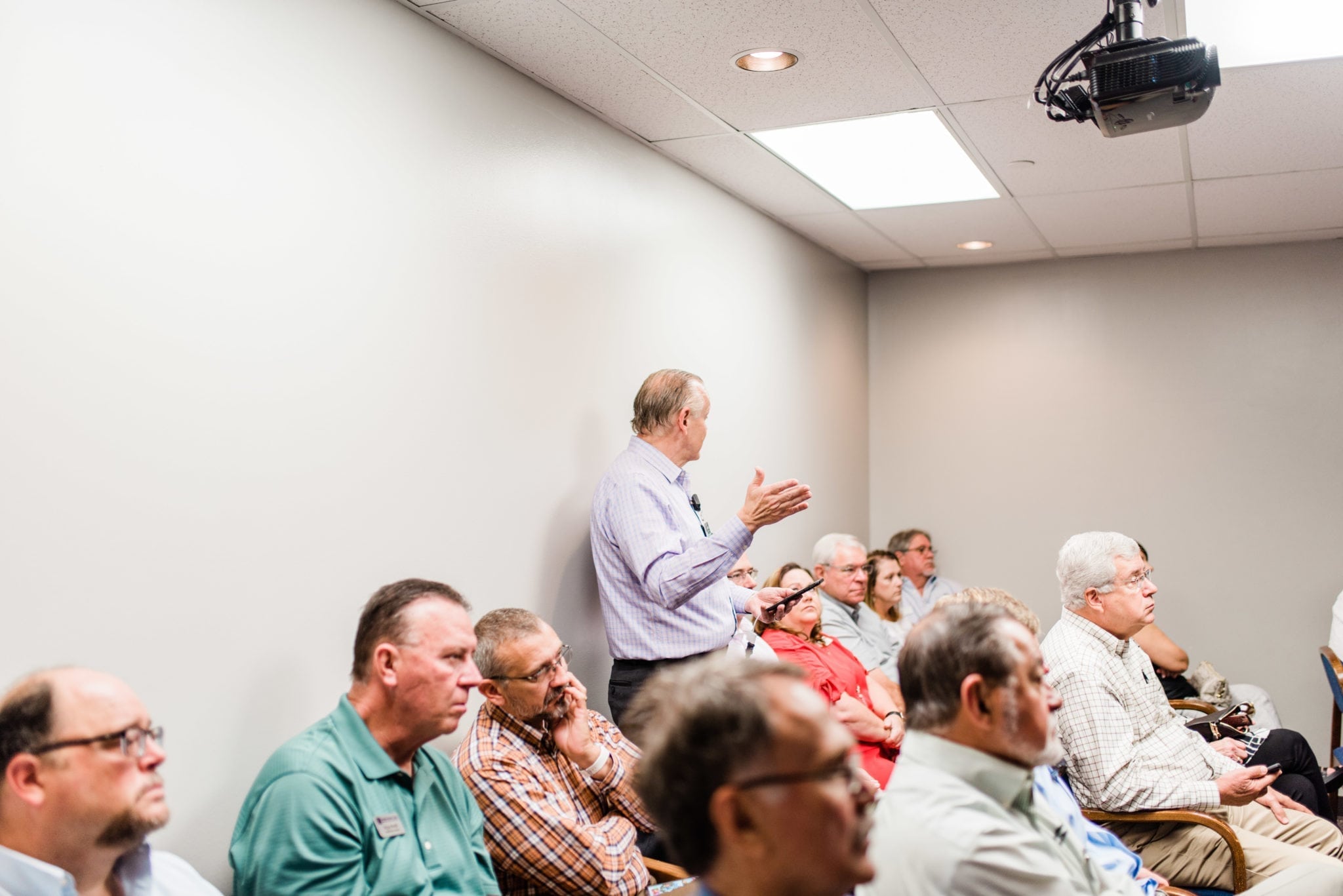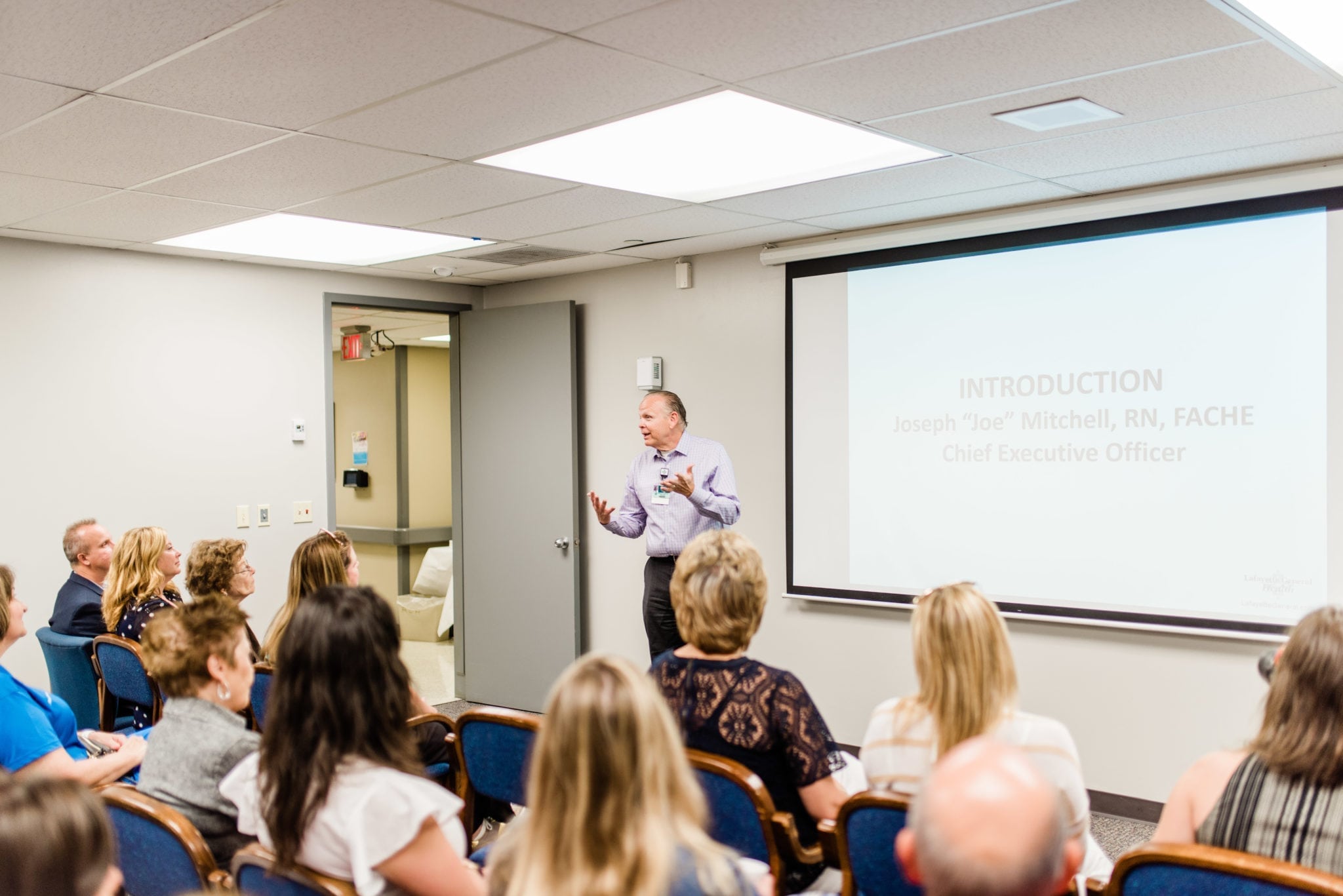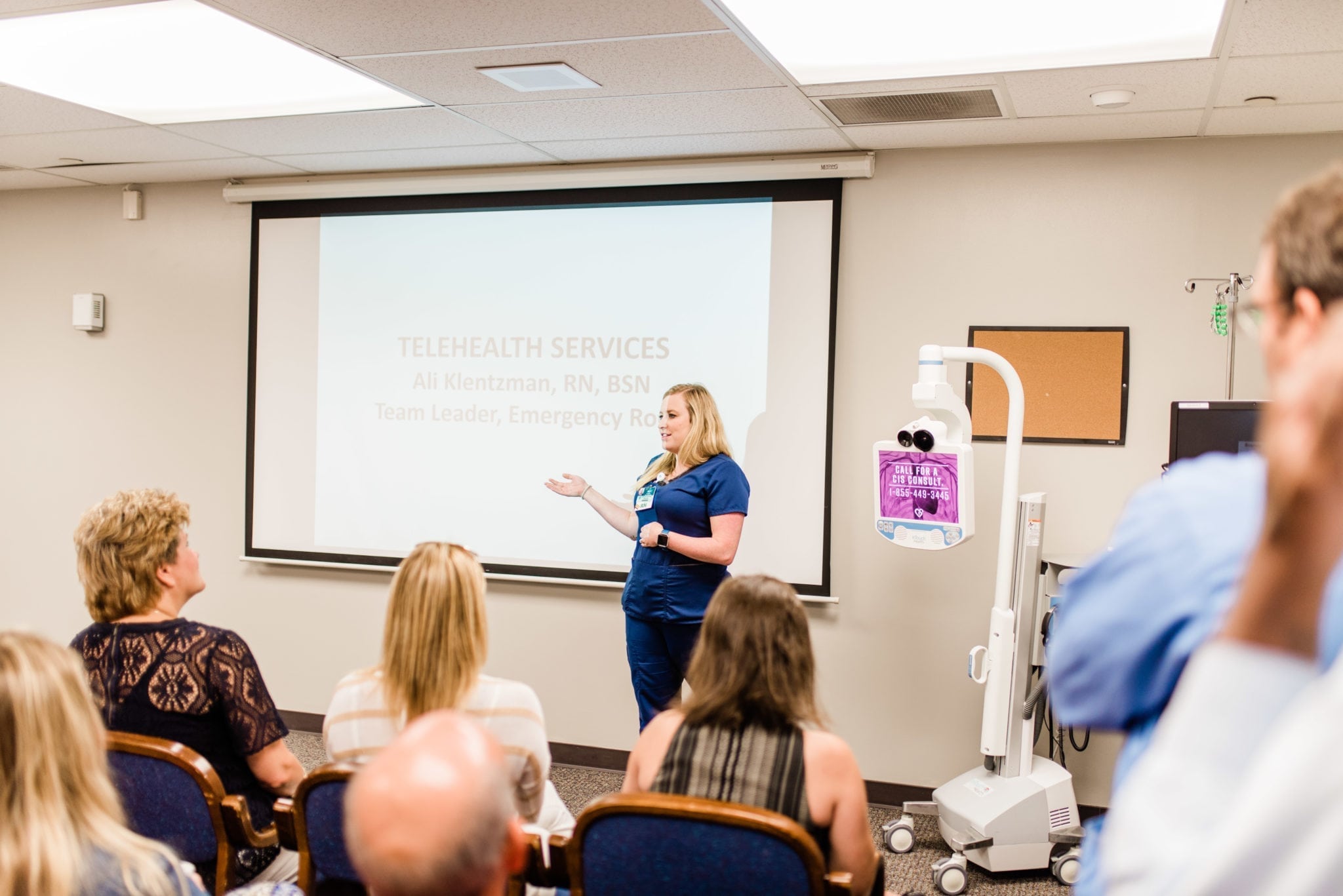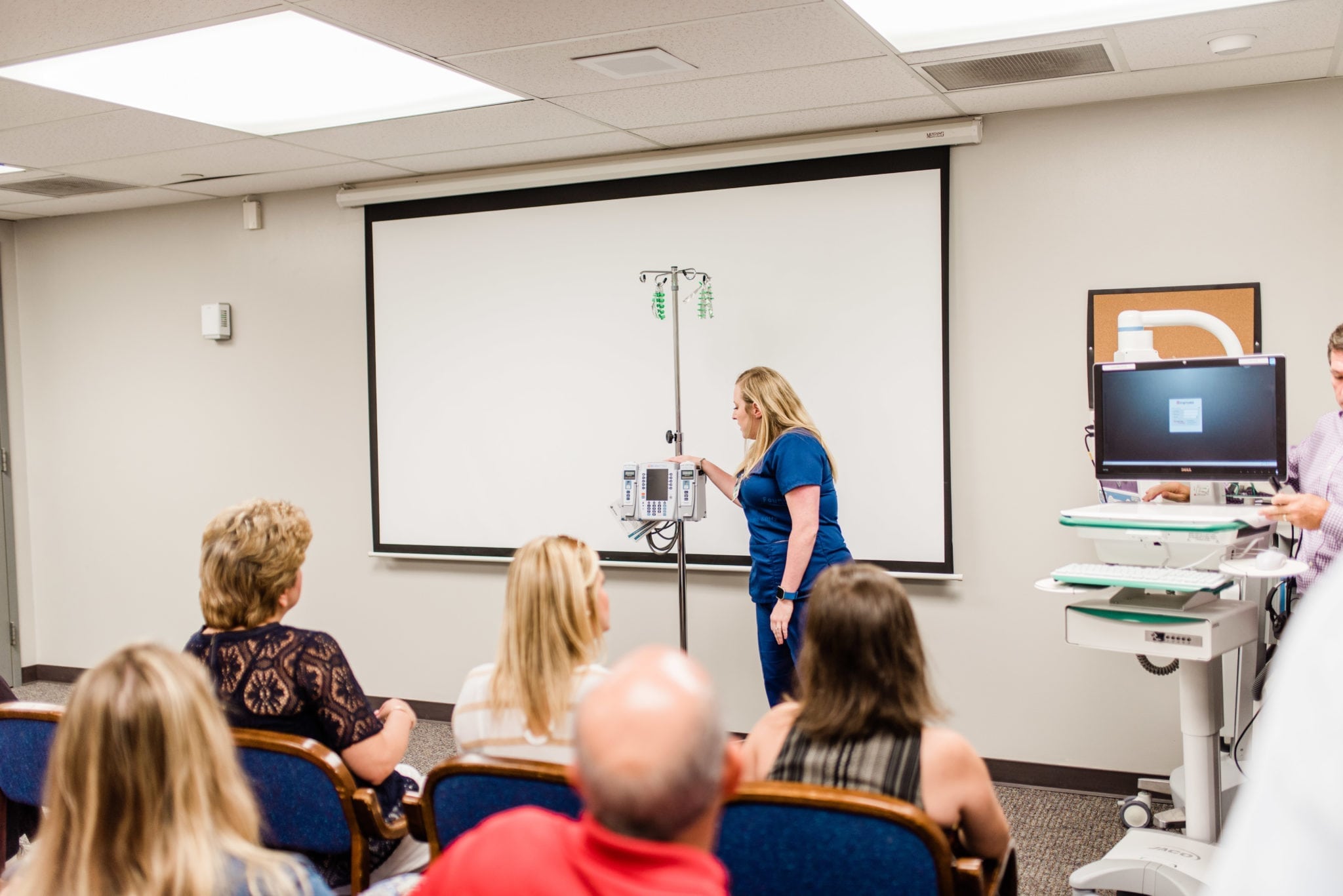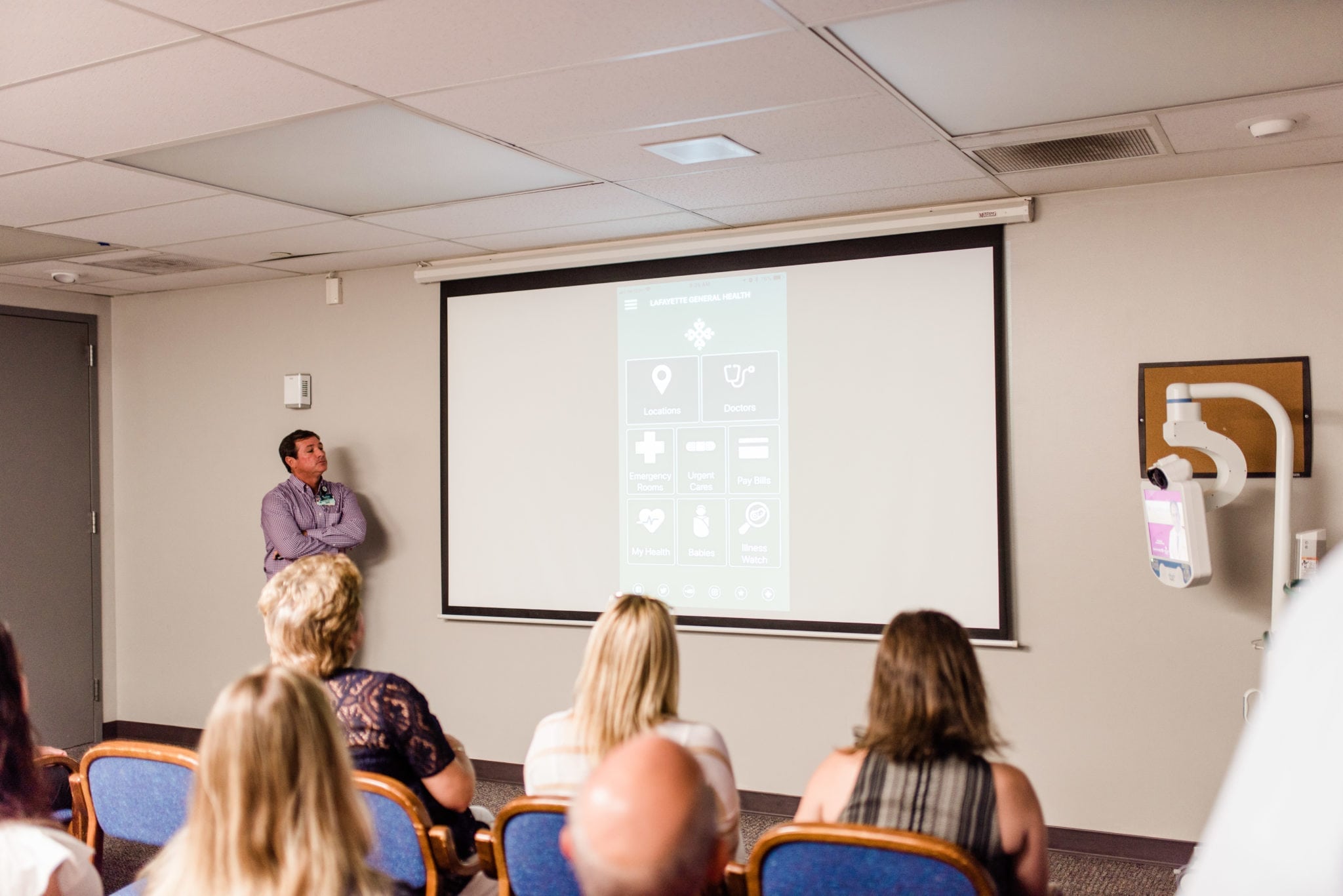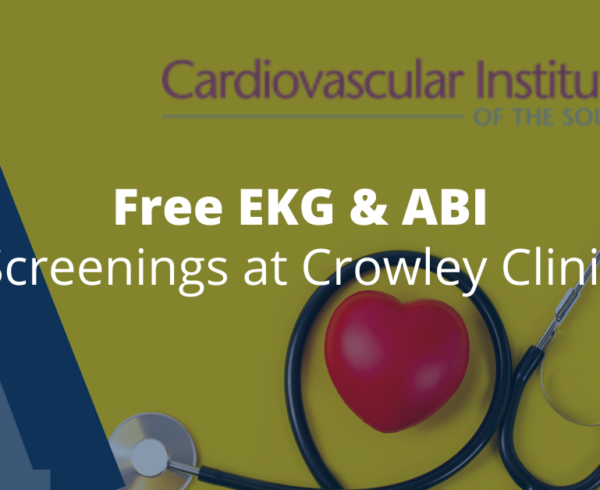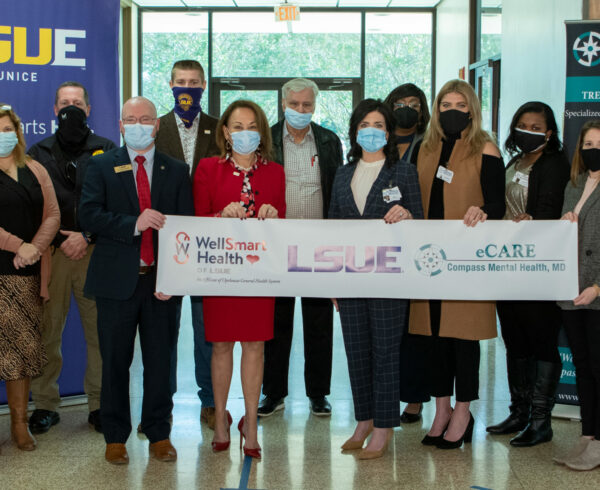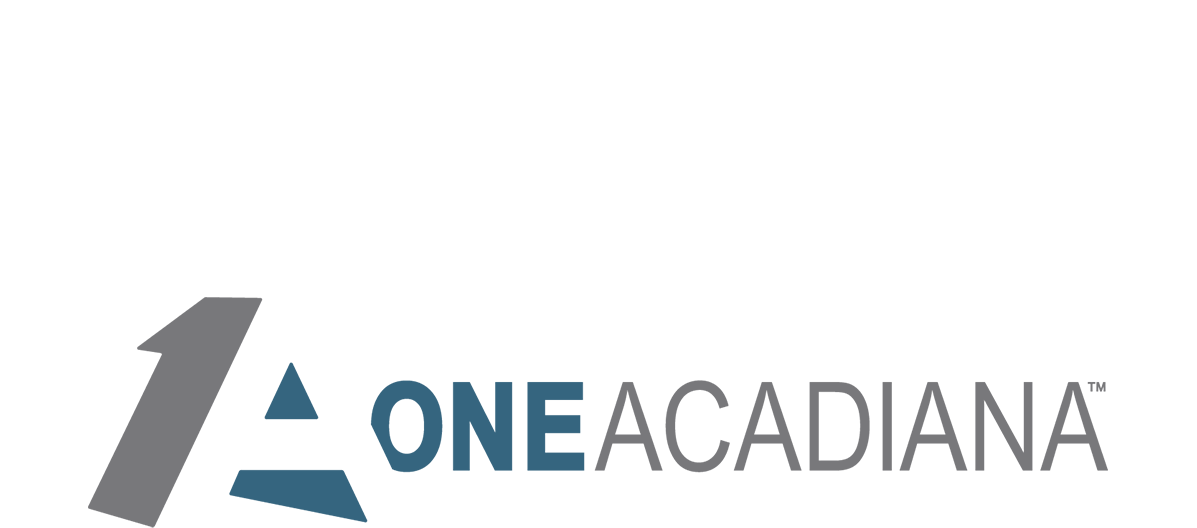Article by Desiray Seaux, Crowley Post Signal
Joe Mitchell, CEO of Acadia General Hosptial, hosted “A Cup of Joe with Joe” Thursday, the morning meeting designed to update the Acadia Parish Chamber of Commerce members on the recent happenings at the hospital.
The Acadia General Hospital has received numerous upgrades recently such as telemedicine carts. Telemedicine is the use of telecommunication and information technology to provide clinical health care from a distance. According to Medicaid.gov, telemedicine seeks to improve a patient’s health by permitting two-way, real time interactive communication between a patient and the physician or practitioner at the distant site.
AGH offers numerous types of telemedicine services, including telecardia, telehospitalist, telepsych and telestroke.
Since the implementation of the telemedicine carts, 50 people have been able to avoid transport and were able to stay at Acadia General from the telecardia cart. The telehospitalist cart has been used over 2,500 times (typically used at night since the hospital has a hospitalist available during the day). The telepsych cart services about 10 patients a month who would have to seek medical attention elsewhere. And, the telestroke cart is expected to go live in August of this year.
Each telemedicine cart cost the hospital about $20,000.
Other new equipment that arrived at the hospital about a month ago were new IV pumps. Replacing the hospitals outdated pumps means more time for the nurses to spend with patients.
One of the biggest problems with the old pumps, according to personnel, was that an “alarm” would sound about 80 to 90 percent of the time while the new ones expect to have “alarms” only 15 percent of the time. Also, specific safety features are built into the pumps, such as matching patient ID with pump/medicine and automatically tracking and charting the information. The new pumps were chosen by a group of nurses and staff in the Lafayette General Network, who voted on the BD Alaris PCU pump to replace IV pumps previously used.
The nurses are also now able to spend more time with patients with a computerized work station on wheels that allows the nurse to scan the patient’s ID arm band. The computerized work stations give the nurses access to all information, such as doctors’ notes or medicine orders in the patient’s rooms verses running back and forth from the nurses station to each patient’s room. Acadia General recently purchased 25 carts at the cost of about $8,000 each.
AGH is approaching aftercare in a new way starting next month. In the past the nurses would call each patient that had been released a few days/weeks prior. However, it has been realized that many people will not answer phone calls from “unknown” numbers. Therefore, the hospital has created a way to register each patient during admission to a department in the hospital by sending an email/text to set up aftercare with follow-up calls including tailored questions about medications and the recovery process.
The messages are tailored to the specific ER complaint — for example, a patient with a sore throat will receive a different set of questions than a patient with a heart condition. The idea is to ask specific questions so that aftercare for a specific condition can be triaged appropriately.
Lafayette General has also adopted a phone application that can be downloaded in the app store on an iPhone by searching Lafayette General Health. The application shows a real time estimated wait time for all emergency rooms and urgent care facilities in the network. This is important information because it gives potential patients a working knowledge of how busy the Emergency Room is at that exact time.
The application also provides about two weeks of live data on an illness list based on patient’s Zip Code. While not giving away patient information, the application compiles diagnosis and Zip Codes into a live map. If a particular region has multiple diagnosis, such as strep throat or the flu, that region will be colored on the map.
Housekeeping has also received upgrades from ancient paging systems to interactive pagers allowing communication throughout the day. It has also allowed for better time management and efficiency in the housekeeping department.
The new paging system allows messages to be sent to housekeeping, the job is then accepted, followed by a start time and end time. Work productivity has be increased drastically.
The surgery suite has received a DaVinci Surgical System, a robotic surgical system designed to facilitate complex surgery using a minimally invasive approach. It is controlled by a surgeon from a console.
Five surgeons at Acadia General operate the DaVinci Surgical System, typically used for hysterectomies, hernia repair and gall bladder removal. Around 250 procedures per year are completed using this system. The system was a $1.8 million investment.
The operating room was also upgraded with new LED lights — a $150,000 investment — and the endoscopy suite received a $250,000 upgrade.
Radiology had new ultrasound machines arrive this week. The new machines are capable of measuring damage to a heart after chemotherapy. The machines were purchased at a cost of $90,000 each.
Acadia General has also upgraded the MRI machine. The machine has a 72-inch bore hole, which is the largest available and used by the National Football League. The MRI has been moved back into the hospital at a cost of about $1.2 million, including cost of construction.
In addition, a new X-ray will be installed Aug. 6 and is expected to be running by the end of August. The new X-ray cost the hospital about $200,000.
Mitchell, wrapped up the meeting with commenting, “You can sense of what it takes to run a hospital, a lot of money.” However, because the Lafayette General Health System is replacing so many machines, Mitchell explained that they were able to get them at great rates.
Mitchell then went on to explain that, although some of the bricks and mortar may need updating, the primary focus is “investing in things that make the biggest impact in patient care.”




